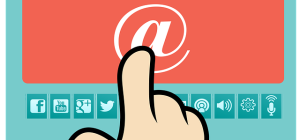A well-functioning webpage requires many details to exist in harmony with both company intent and user experience. No example underscores this more than a call to actions (CTAs). CTAs serve as a roadmap of how to navigate a website. They tell a user where to go next and allow a business to prioritize how they want users to interact with their store.
So beyond a mode of buying and selling via the internet, what really defines e-commerce is the quality of the experience offered. This is evidenced even in the first-ever online sale in 1994: a Sting CD via a retail platform called NetMarket.
Call to actions, despite merely being small buttons with a few words of copy, can have an underlying impact on the emotions users feel. Something with such sway shouldn’t be taken lightly, which begs the question: are you using effective e-commerce call-to-actions effectively?

The Copy Engages
Only so much room for words on a CTA button and that makes the opportunity to compel all the more powerful. Of course, certain offers, like free trials, don’t need anything more than stating the terms of the offer. But plenty of other ones — like signing up for an email newsletter, joining a loyalty program, or browsing products on sale — can see varying engagement rates depending on the copy that incites the offer.
Every CTA should lead with a proven word, but after that, it’s your job to tie an emotional reaction to the thing you’re offering. Some CTAs aims to empower the user with possibilities, while others intrigue with something novel. It’s also no rarity for companies to use urgency to invite engagement.
Your CTAs Are Clear
What do you want users to do? It’s as simple as telling them. Try to do anything more than be straightforward and you’ll get further from your actual intent. Think of CTAs as an essential piece of public signage. Does a men and women stick-figure sign in a vast space tell you how to get to the restroom? Does a ‘Lane Ends. Merge Left’ sign on the highway alert you to get over? You should aim for that level of assistance, noteworthiness, and persuasion in your call to actions.
They’re Always Buttons
There’s no point in having a call to actions if they’re not going to be recognized as such by most users. This means that anything beyond buttons is a deviation from what’s worked plenty well for marketers since the internet’s inception. Per Crazy Egg, CTAs share a few common traits: they have a defined shape or border, they have text, and they’re a different color than their surroundings. David Zheng writes, “at this point, buttons are such an established element of design that when you don’t use them, you risk confusing your visitors. And no matter how confident you are in your offering, you can’t rely on potential customers to go extra lengths to do business with you.
They Reflect the Page They’re On
Your website contains all sorts of pages suited to different visitor intents. There’s the homepage, landing pages, blog articles, FAQ page, and anything else specifically related to business. As such, the CTAs that exist on each of these pages need to make contextual sense and complement the page’s intent. That’s why ‘you should also read’ links (either in-article or after) generate such high click-through rates or why persuasion-heavy landing pages see engagement with an enthusiastic call to actions.
Nothing Competes with Them
Web pages are designed to do many things, but before they’re finished, a call to action comes into play. They’re the prime real estate on the page, after all—and their placement needs to match it. CTAs should flow naturally with the page, following the copy and utilizing adequate white space to stand out. You should be able to widen your focus and still be drawn to your CTA button. If it’s not that attention-grabbing, it’s not going to have a hard time grabbing many attentions. There are occasional caveats to this — times when a page isn’t designed to do one specific thing but instead send users in the awareness stage across the website to learn more, but in general you want one CTA per page and for their presence to command the most attention.
No company gets their call to actions right immediately. The best and only way to ensure you’re using CTAs effectively is to continually A/B test and iterate. Good luck optimizing the various offer buttons on your site and improving your engagement in the process.







